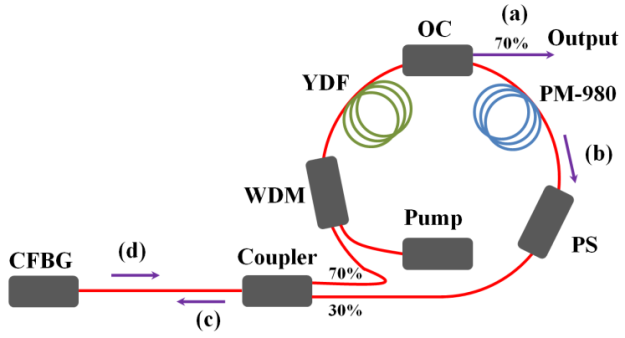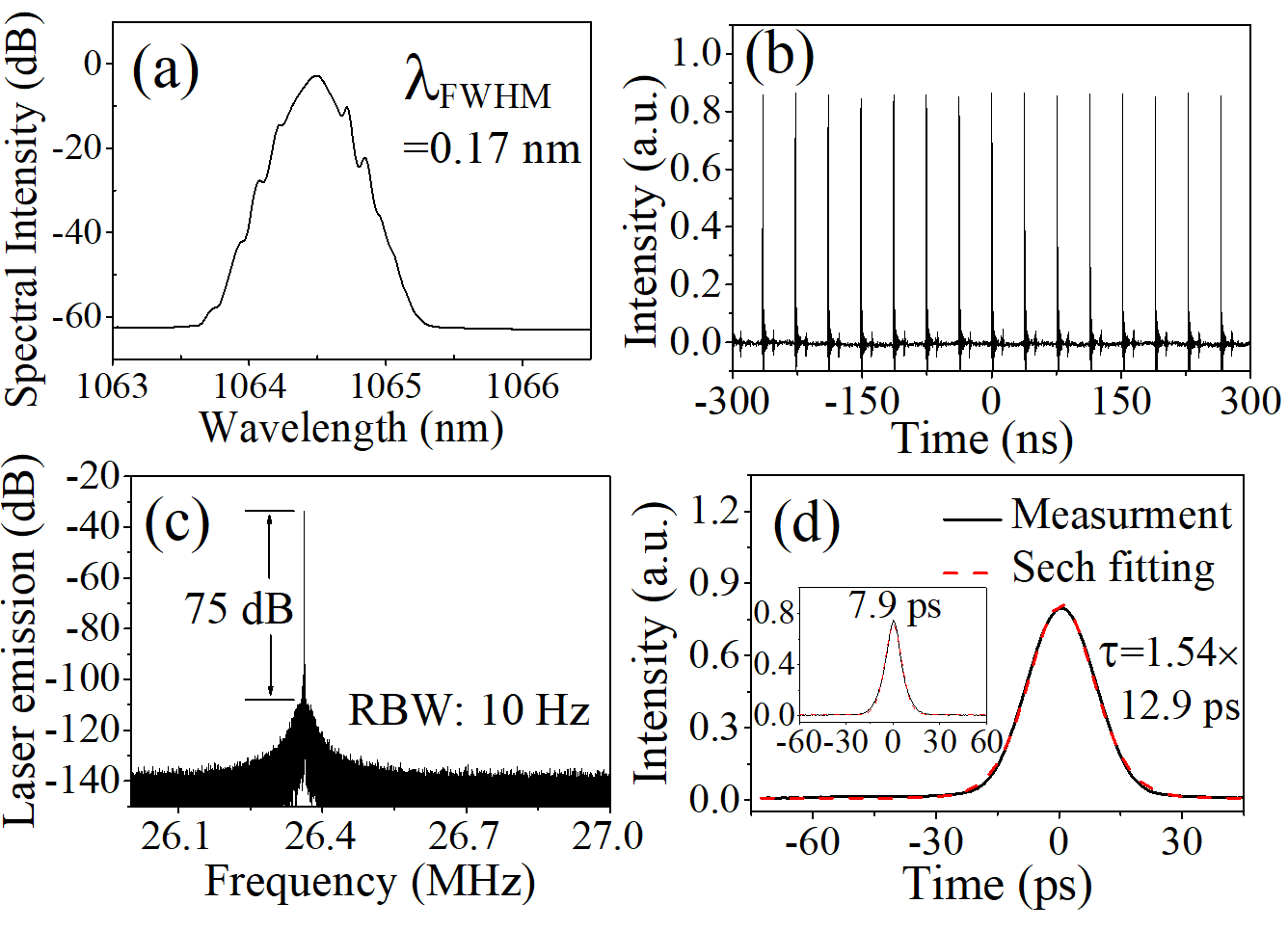Dissipative soliton (DS) fiber lasers are proved to have great potential for producing optical pulses with extremely high energy and peak power.
Up until now, most DSs are demonstrated in a normal dispersion regime. Thus, whether high-performance DS can be experimentally obtained in a large anomalous dispersion regime remains a subject that is worthy of investigation.
Recently, a research team from Shanghai Institute of Optics and Fine Mechanics of the Chinese Academy of Sciences (CAS) experimentally demonstrate a DS generation from a large anomalous dispersion Yb-fiber laser.
The mechanism of the DS in the designed large anomalous dispersion cavity is investigated and explained through numerical simulations. The results were published in Optics Letters.
The laser was designed in a figure-of-9 structure, which is a new-type of nonlinear amplified loop mirror (NALM) mode-locking technology. A nonreciprocal phase shifter providing a linear π/2 phase bias is inserted into the NALM loop to promote self-starting of the mode-locked operation.
Since traditional single-mode fibers have normal dispersion around 1 μm, the large anomalous dispersion is achieved by implementing a chirped fiber Bragg grating into the laser cavity.
A self-starting mode-locked operation was achieved in the laser with a pump threshold of about 400 mW. The maximum average output power of 91.9mW was obtained at a pump power of 550mW. The pulse repetition rate was measured to be at 26.4 MHz, which gave a pulse energy of 3.5 nJ. The DS has a Sech-like shape spectrum with a narrow 3 dB bandwidth of 0.17 nm. The output pulses can be extra-cavity dechirped with a pair of free-space gratings down to 7.9 ps.
According to the numerical simulations, in contrast with traditional DSs in all-normal dispersion regimes, the DSs presented in this work experience strong temporal, spectral, and chirp breathing.
Thanks to the characteristic chirp breathing, the output DS pulses can maintain a narrow spectral bandwidth of 0.17 nm. Such narrow spectral bandwidth is an essential requirement for high-power amplification in a 1064 nm solid-state amplifier.
Besides, the laser is constructed by merely four commercial PM-fiber components, which help to promote the system's robustness, compactness, cost-effectiveness and long-term stability. These advantages make the DS laser presented here an ideal seed oscillator for many industrial applications like micromachining and hard-brittle material processing.
This work was supported by the National Natural Science Foundation of China.

Fig. 1. Scheme of the figure-of-9 DS fiber laser, WDM: wavelength division multiplexer; YDF: ytterbium-doped fiber; OC: output coupler; PS: phase shifter; CFBG: chirped fiber Bragg grating. (Image by SIOM)

Fig. 2. Output characterization of the figure-of-9 DS fiber laser.(Image by SIOM)
Article website:
https://doi.org/10.1364/OL.406104
Contact:
Mr. Wu Xiufeng
General Administrative Office
Shanghai Institute of Optics and Fine Mechanics, CAS
Email: xfwu@siom.ac.cn